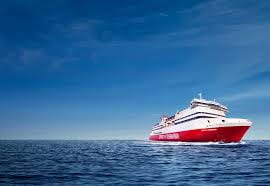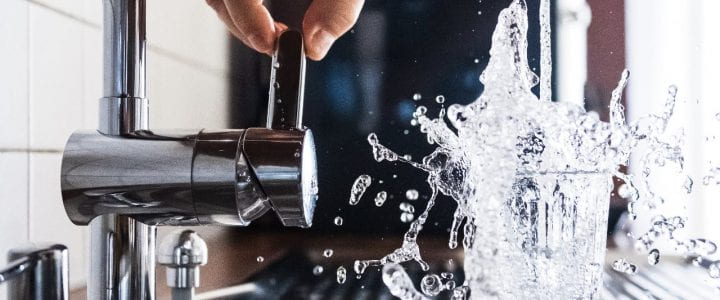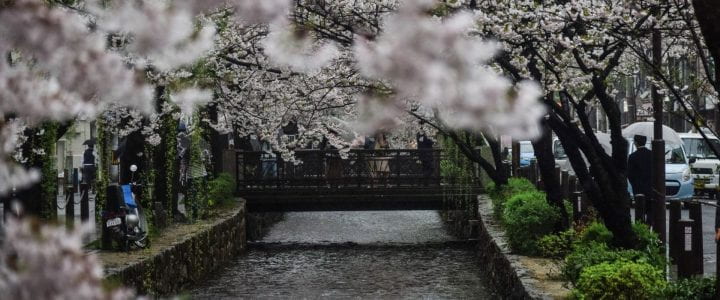Background
Goulburn Valley Water (GVW) provides water and sewerage services to approximately 130,000 people in 54 cities, towns and villages across more than 20,000 square kilometres in northern Victoria. GVW also provides water and sewerage services to a large and diverse food manufacturing industry in the Goulburn Valley – also know as the food bowl of Australia. Providing these water and sewerage services requires 37 separate water treatment plants for approximatley 59,000 properties across 54 towns, 26 wastewater management facilities for approximately 50,700 properties across 30 towns and 1,800 kilometre of buried water mains and sewers.
These 63 geographically dispersed water and wastewater systems are a defining feature of the operating environment of GVW, which has a major influence on the capital investment program, operational costs and customer service response times.
Provision of high quality water and trade waste services to food processing industries is a major business focus due to their individual impact on Goulburn Valley Water’s systems.
The geographic area of Goulburn Valley Water comprises the local government areas of:
- Shire of Moira;
- Shire of Campaspe;
- City of Greater Shepparton;
- Shire of Mansfield;
- Shire of Mitchell;
- Shire of Murrindindi; and
- Shire of Strathbogie.
The main activities undertaken by Goulburn Valley Water are:
- Harvesting and treatment of raw water;
- Planning and management of headworks;
- Reticulation of treated water to customers;
- Collection and transportation of wastewater including trade waste;
- Treatment and beneficial re-use of recycled water;
- Beneficial recycling of wastewater treatment by-products such as biosolids and biogas;
- Development and implementation of programs for the conservation and efficient use of water;
- Planning with communities for their future water and wastewater services;
- Community education about sustainable water management.
Goulburn Valley Water provides a range of services defined as Prescribed Services and Declared Services (regulated services) in clause 7 of the Water Industry Regulatory Order 2014 in respect of which the ESC has the power to regulate price standards and conditions of service and supply.
The regulated services provided by Goulburn Valley Water are as follows:
- Retail water services;
- Retail recycled water services;
- Retail sewerage services;
- Storage operator and bulk water services;
- Bulk sewerage services
- Bulk recycled water services;
- Connection services;
- Services to which developer charges apply;
- Trade waste services.
Goulburn Valley Water does not provide drainage services (stormwater), irrigation services and irrigation drainage services.
A student project in collaboration with RMIT University to evaluate the efficiency of pumps in the network with respect to different types of starting mechanism for the pumps has been initiated in January 2020. SCADA data from two pump stations, i.e. Shepperton and Sunday Creek, are used to investigate how this evaluation could be approached. The SCADA data come with two large Excel files:
- Interval Data Sunday Creek PS & Shepp HLPS.xlsx (electrical system data)
- Shepparton HLP values 20190101 to 20200101.xlsx (water system data)
SCADA data cover readings from 0:00 hours on 1 January 2019 to 23:55 on 31 December, 2019. The water system data are in 5 minutes interval, but the electrical system data are in 15 minutes interval. The two sets of data are synchronised to 5 minutes interval by linearly interpolating the 15 minutes interval data of the electrical system.
Investigations so far
The data file contains comprehensive data set of Shepperton HL Pump Station. Hence, the following investigations are made on Shepperton HL Pump Stations only. Several data investigative processes have been initiated:
- Preliminary power data audit
A critical question that needs to be addressed is accuracy of the data. Accurate, reliable data support conclusions derived from the data set, otherwise, any outcome is questionable. Pump operations depend on pressure acting on the system. This preliminary power data audit uses a theoretical electrical power formula for 3 phase delta circuit and computes the individual and total power drawn by the machines. The result shows the computed electrical power differs from the recorded electrical power (in the electrical data file). Further investigation of how water flowrate and power are related is required.
The amount of water pumped through the station is closely related to the power drawn by the pumps in the station. This analysis goes into detail 5 minutes interval data and examine how the recorded waterflow can be used to reversely compute the power used by the pumps. Due to complexity of the computation, only a preliminary snapshot of the data on first day of SCADA data is analysed. The result shows that the pressure gauge value is constant and does not show any significant variations irrespective of change of water level in the ODR tower. It is also noticed in this investigation process that there are discrepancies of frequency data (related to motor speed) with the electrical system data. It is later found that the frequency data might have been dislocated in time by about half a day.
The power-based analysis assumes that the power drawn by a pump is proportional to the current it draws. Since the recorded power is lower than the computed power, it is assumed actual power is proportional to computed power of pumps. With reference to the manufacturer’s supplied pump curves, which have been fitted to a second order regression curve, the respective water flowrates are computed to check if the data can be reconciled. The result shows that this method seems to generate water flowrate curve matching the trends of pump utilisation in the recorded durations, but it also highlights the issue that the pumps’ performances have deviated from the manufacturer’s pump curves.
- Pump performance calibration by single pump operating data
To investigate if the pumps have performed differently, without the need for on-site experiments, the pump system data are filtered to obtain records for each of the 6 pumps when they are operating by its own, i.e. only one pump is running at that time. This exercise turns out to be very valuable in identifying some potential issues in the pumps. The single pump operating data are plotted as pump curve, i.e. using daily flowrate as x-axis and power as y-axis. The data are statistically fitted to a second order regression curve in the same way as the digitised pump manufacturer’s curves. The result shows that the pumps have been drawing more power than the initial manufacturer’s data.
- Daily water flowrate investigation
The new pump curves calibrated in (4) are used to compute the water flowrate for several selected days. Focus of this investigation is on whether the total power drawn by the system can be substantiated by the amount of water being pumped. The result shows that the power data match well for single pump operation, as expected. For two pumps operation, there seems to be about 8% to 15% power unaccounted for with the water flowrate computed power. It is therefore suspected that the higher pressure head delivered by one pump causes turbulence losses in the flow path of another pump.
- Matching pressure head pump speed control
The single pump performance data are calibrated again this time focusing on the pressure head relationship with the daily water flowrate. The calibrated pump curves for pressure head vs water flowrate are computed in the same way statistically. It is worth to note that although the pressure gauge values seem to be constant in relation to the ODR tower level, there are some observable variations when the data is computed against daily water flowrates. The new pressure head pump curves are used to compute potential power savings if the pressure head delivered by two pumps are equalised to the lower pressure values. Physically, this means one of the pumps, i.e. the pump delivering higher pressure should be slowed down. According to pump laws, the power drawn by the pump at its slowed down speed is proportional to square root of the cube of speed ratio. The result shows about 12% power savings if the assumptions made in different parts of the computational process are correct.
Follow-up projects in 2021
The above investigations are carried out on the initial data set extracted from the historical SCADA data repository. Some of the data are suspected to be inaccurate. The context of some information, e.g. pressure gauge value representing what, is also unknown. Interpretation of the data in relation to the overall system performance is doubtful. Discussion on the possibility of implementing a speed control algorithm to the motors so that pump pressure head can be adjusted intelligently leads to the conclusion that some changes to the system PLC might be required.
In order to understand what can be done and what needs to be upgraded in the system to achieve the estimated level of power savings, the following student projects are proposed to verify analysis results and to project to possible outcomes:
(1) Experimental pump curves calibration
Accurate pump performance is critical to the accuracy of power savings analysis. This project aims to re-construct operational performance curves of all 6 high lift pumps for two important performance parameters:
- Power (electrical power drawn by the pump) vs Daily water flowrate. The water flowrate should range from 0 Ml/d to whatever maximum water flowrate possible for that pump.
- Pressure head vs Daily water flowrate. The same water flowrate range in (a) will be used. Preferably, an electronic water pressure sensor should be installed at the outlet pipe of each of the pumps. However, if that is not feasible due to physical configuration constraints, multiple pressure gauges are still required at different locations of the piping system so that the hydraulic conditions could be verified with theoretical pressure head computation.
The two performance parameters can be measured simultaneously in the same experimental setting.
Two students are required to ensure the experiments are done with reliable processes and data recordings. It is expected that at least two hours of operating data at different water flowrates, motor speeds and outlet pressure conditions would be required. Two trips of the two students to Shepperton are planned: Trip 1 will collect majority of data for first trial pump curve compilation, Trip 2 will be a data validation trip as well as collecting any missing data (could be due to situation in Trip 1 or due to findings after analysing first set of data). Due to distance, an overnight stay in Shepperton for both trips is required.
(2) Computational analysis
The 6 initial investigations are done on Excel manually. Cells are hard coded and hence the possibilities of analysis method variations are limited. For example, investigations (3) and (5) are restricted a few days’ operating data due to frequent change of pump use preference.
While follow-on project (1) prepares for the data, this follow-on project (2) will develop an analysis software based on the methods applied in the 6 initial investigations so that when the calibrated pump curves are ready, the numerical analysis can be done quickly. To prepare for this ideal situation, two activities are required in this student project:
- Work with GVW data specialist to extract 2020 data in agreed format for both water system and electrical system. The new data will be processed initially in the same way as the 2019 data set to test if there is any inconsistency.
- Develop analysis software with the primary objective of computing potential power savings. Extending from the primary objective, the software will be developed to allow flexible incorporation of different speed control algorithms to be incorporated into the historical data stream to examine effect of various control methods, i.e. not just pressure matching, but also on possible water flowrate matching, power balancing, etc.
Two students are required to work collaboratively for capturing analysis ideas, system performance data matching, software development. Most of the project activities are desk based but a short trip to Shepperton to understand the physical system will be most beneficial to the students. The short trip will be day return.
Future work
The proposed follow-on projects are focused on Shepperton HL Pump Station. It is expected that the analysis experience and findings such as control algorithms can be applied to other pump stations. However, to maximise the opportunity for success, this proposal does not include investigative adaptation of the findings to other pump facility settings, nor any other system parameter investigations.
Deliverables:
The deliverables of this project will be staged with an initial focus on data collection.
| Deliverable |
Description |
Initial Timing Estimate |
| Commencement Workshop |
- Collect Data from GVW (data for 2019-20)
- Orientation to the project
- Historical issues re pump efficiency
- Overview of work 2020
- Individual student briefs and research questions
|
Feb
Early March |
| Milestone 1 |
Project Plan |
March |
| Milestone 2 |
Some preliminary analysis of Data
· Evaluation of data
|
May |
| Milestone 3 |
Progress report. |
Early June |
| Milestone 4 |
Draft Project Report. |
Early September |
| Milestone 5 |
Project Report. |
End September |
|
A presentation on the project report. |
End October |
Governance:
This project will be managed through weekly meetings of the students whom will seek draft approval from the Project Managers (Prof. John Mo and Marcos Anastassiou) and through contact with the Project Sponsor (Michael Welk) to ensure work is satisfactory.
Reporting Requirements:
There will be draft approval and/or progress reporting fortnightly to the project managers.
Assumptions and Constraints:
Primarily governed by ready access to the relevant SCADA data
Risks and Minimisation Strategies:
Incomplete data collection resulting in inaccurate recommendations.
- This will be minimised by collecting as much data as possible from as many sources as possible.
Low data resolution.
- The highest resolution data available will be sourced to ensure accuracy.
Guidelines/Standards:
Water Act 1989
Water Industry Act 1994




